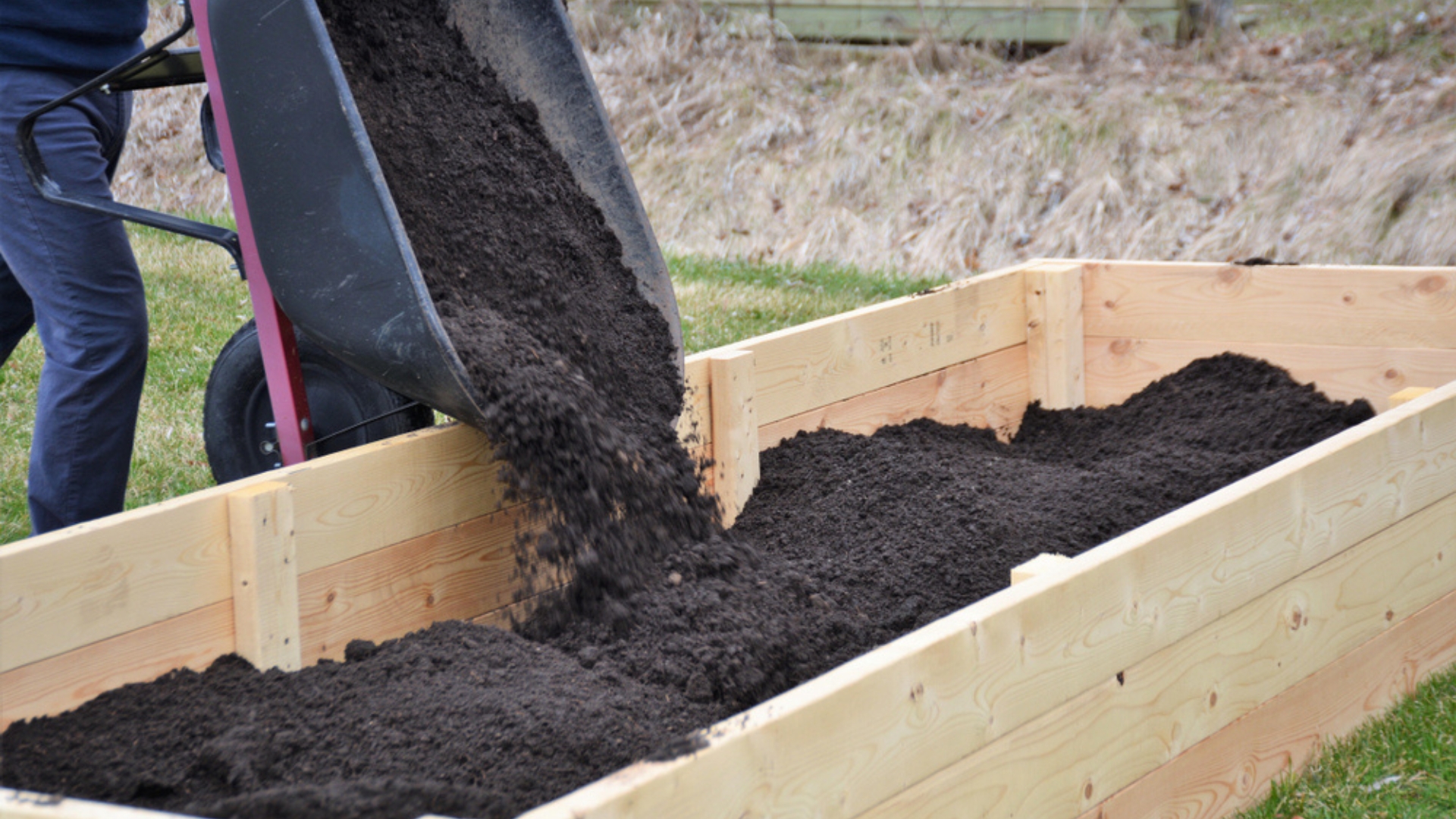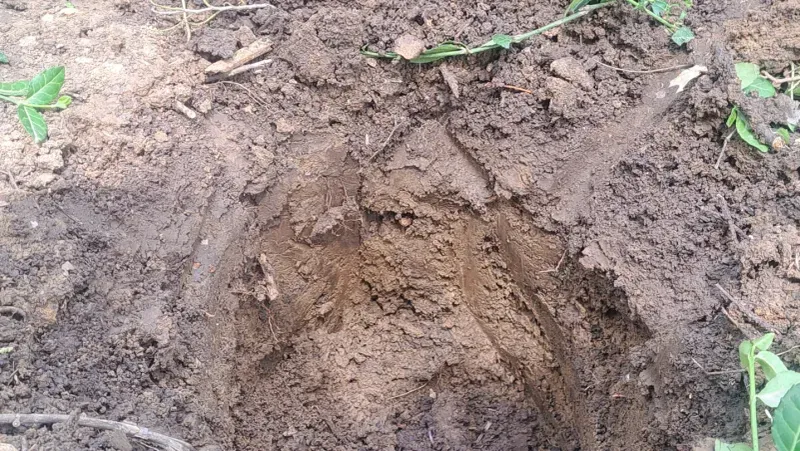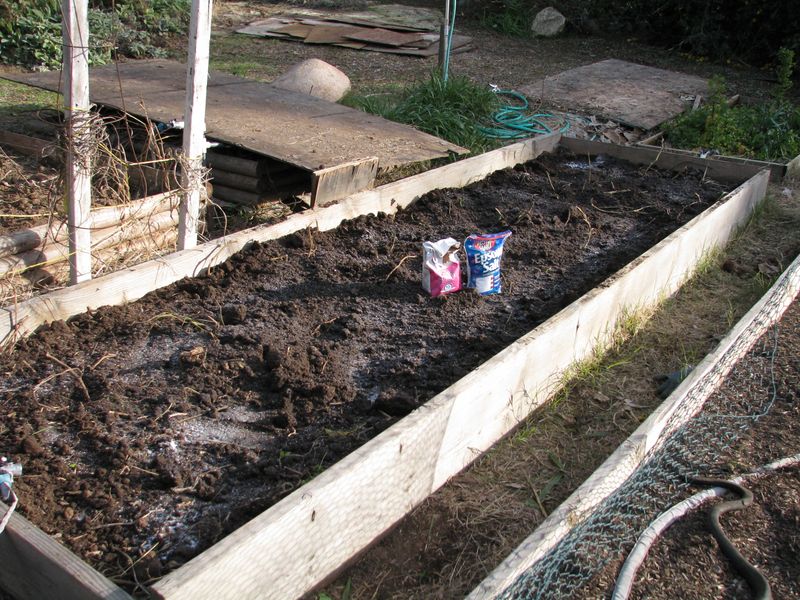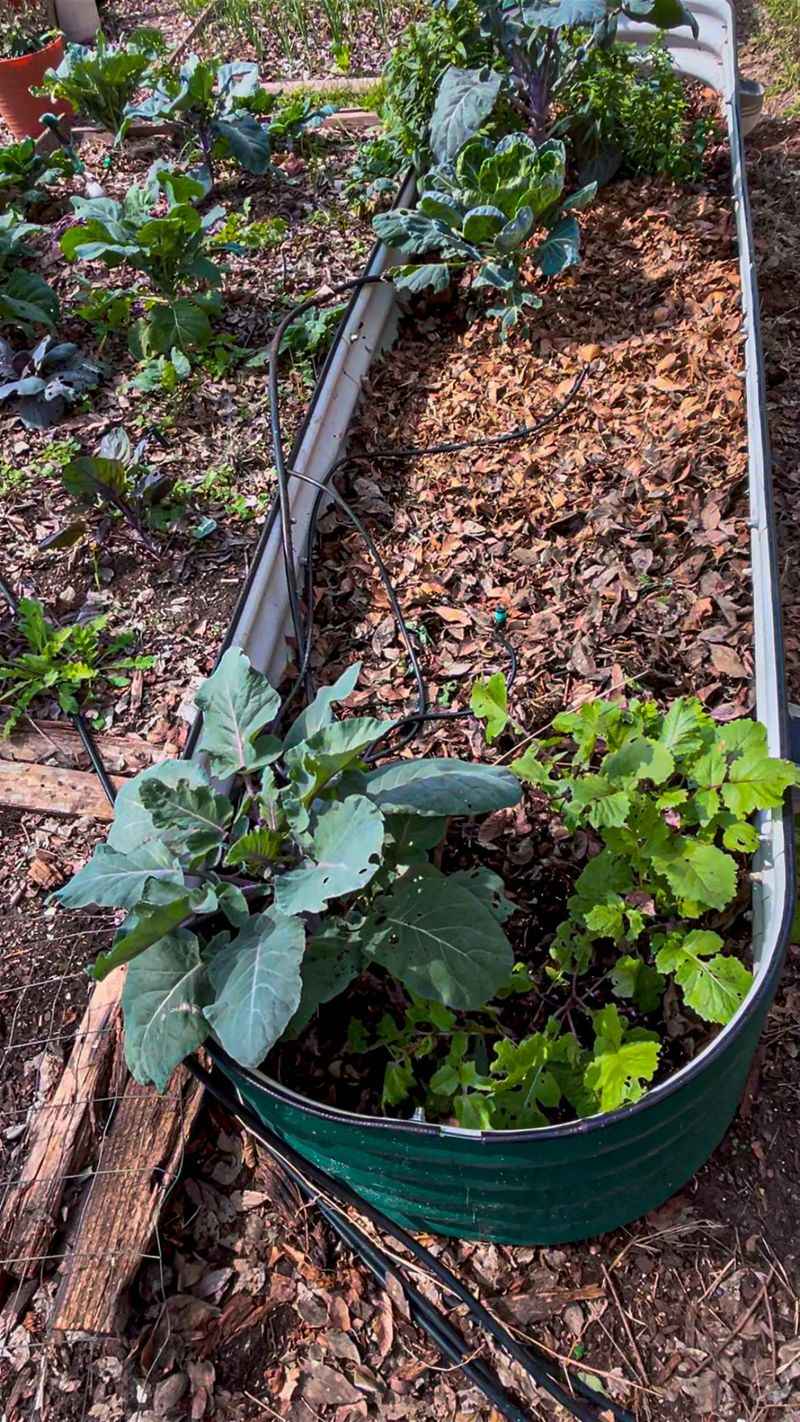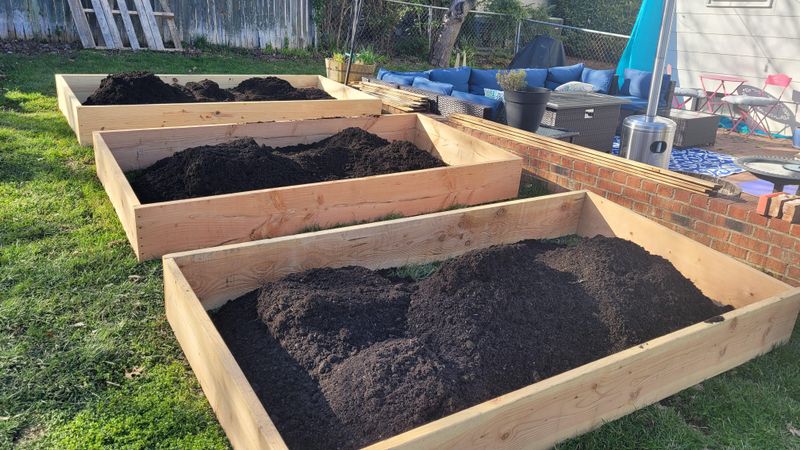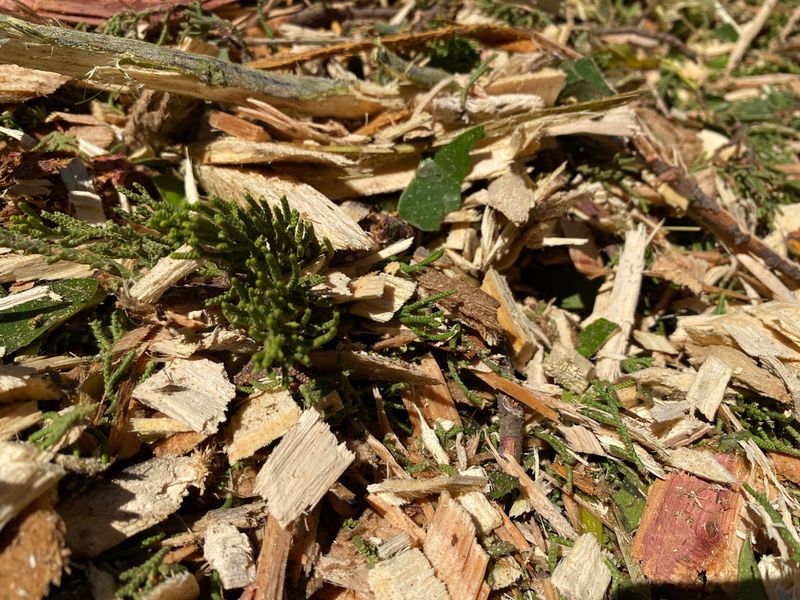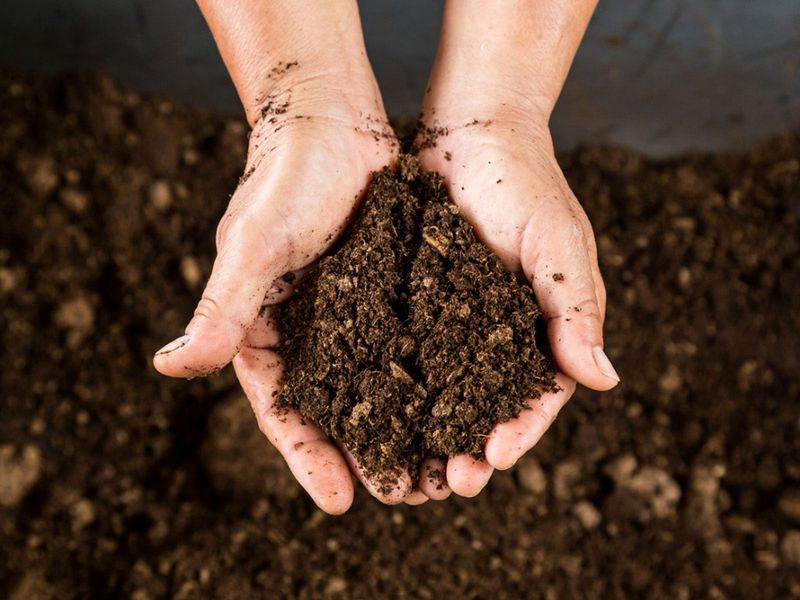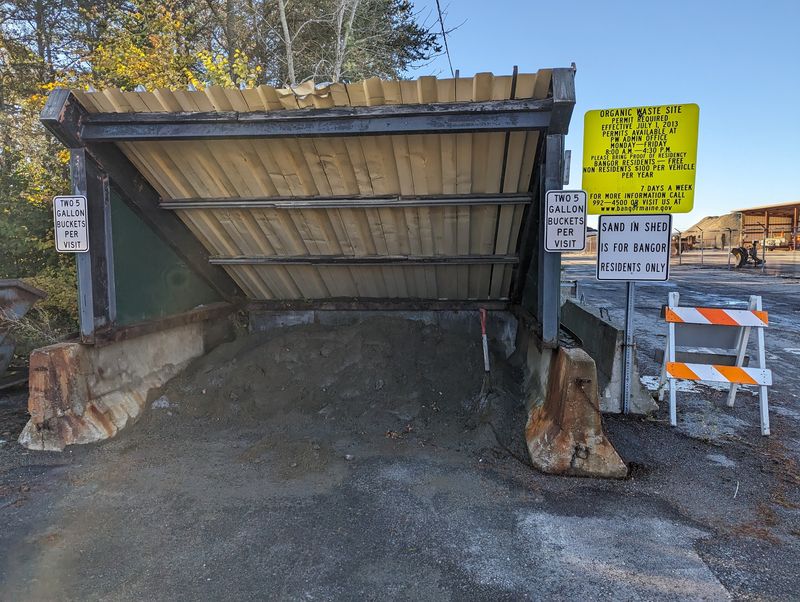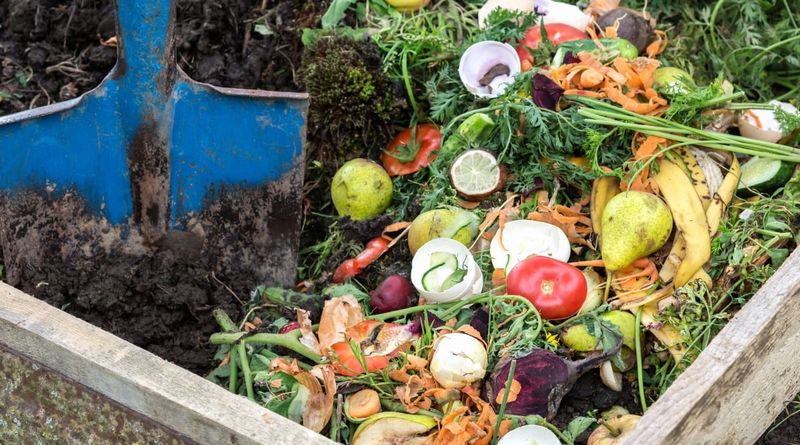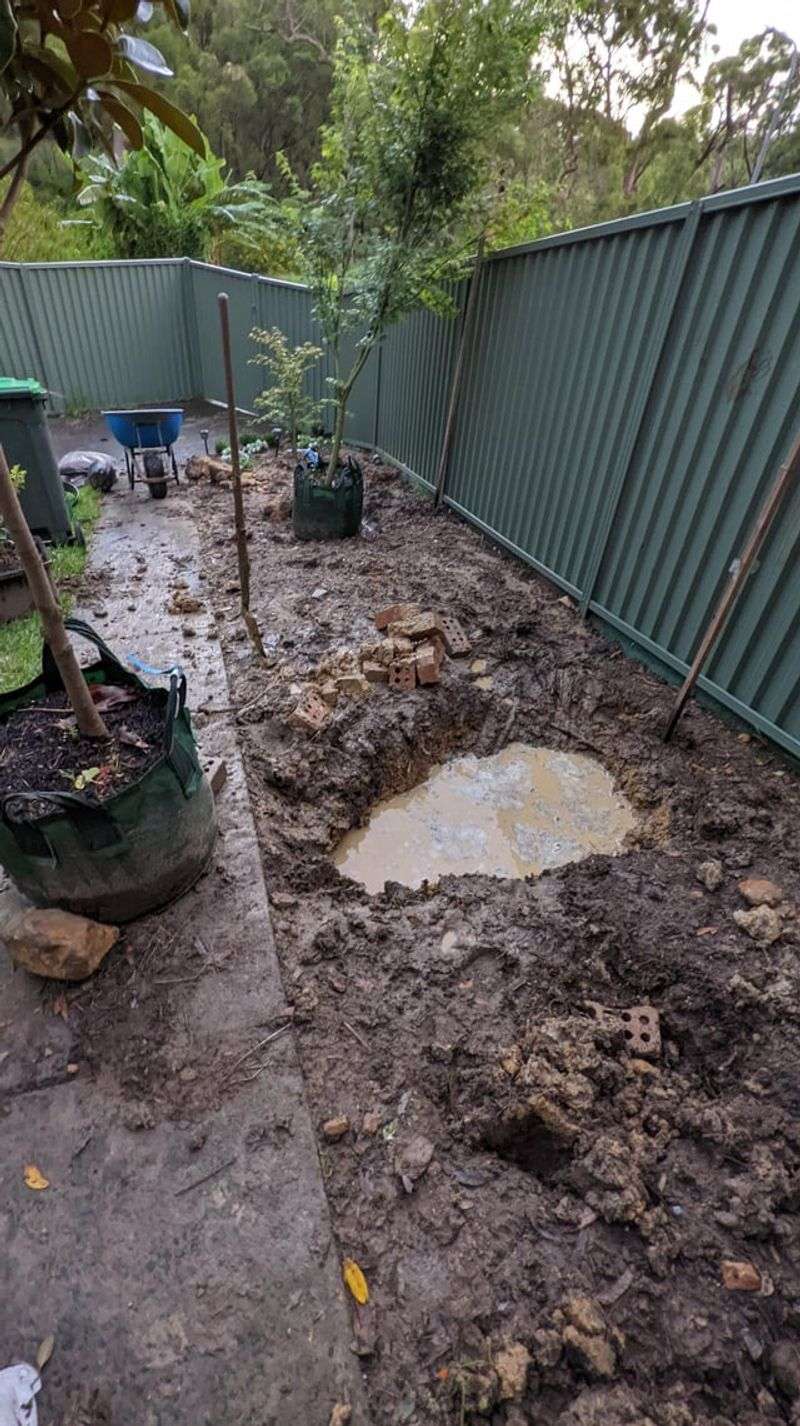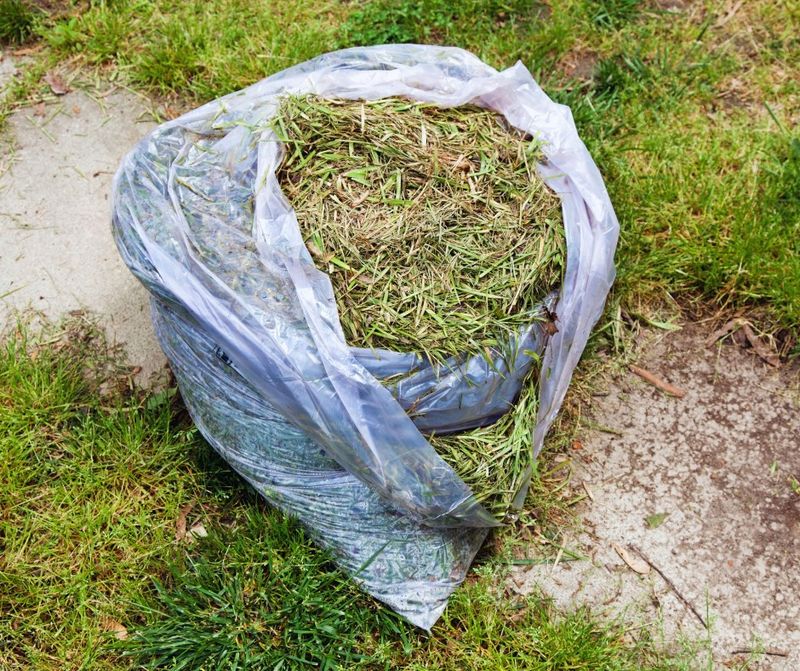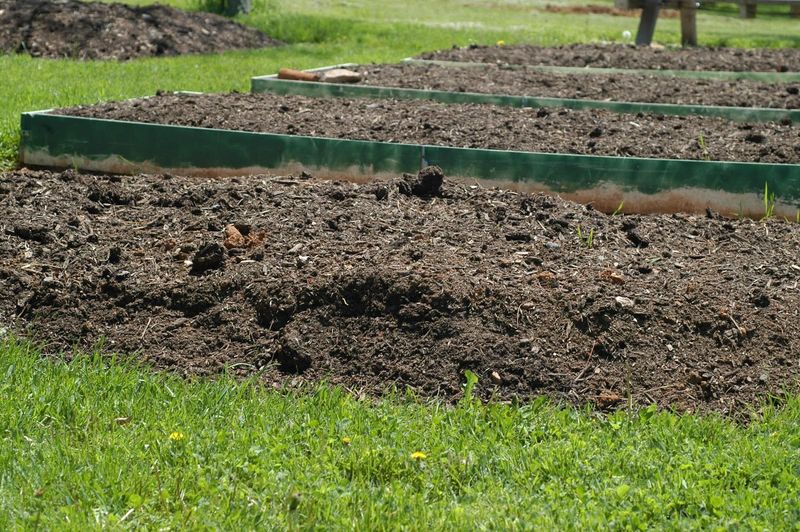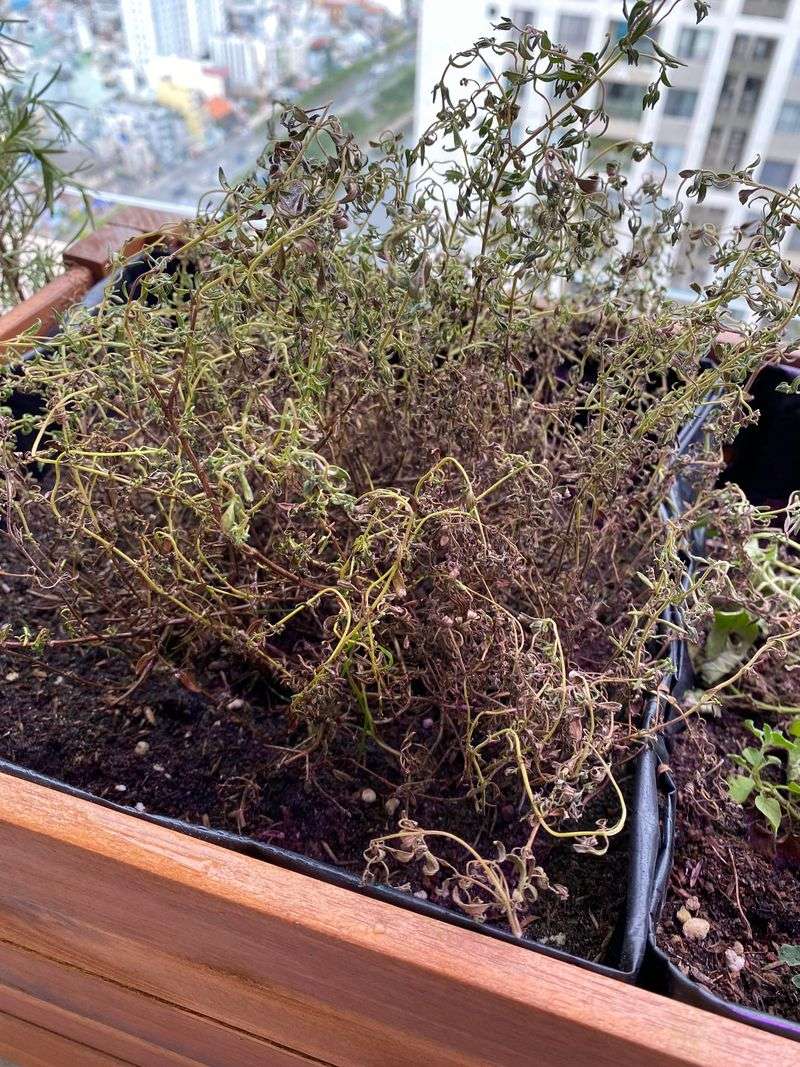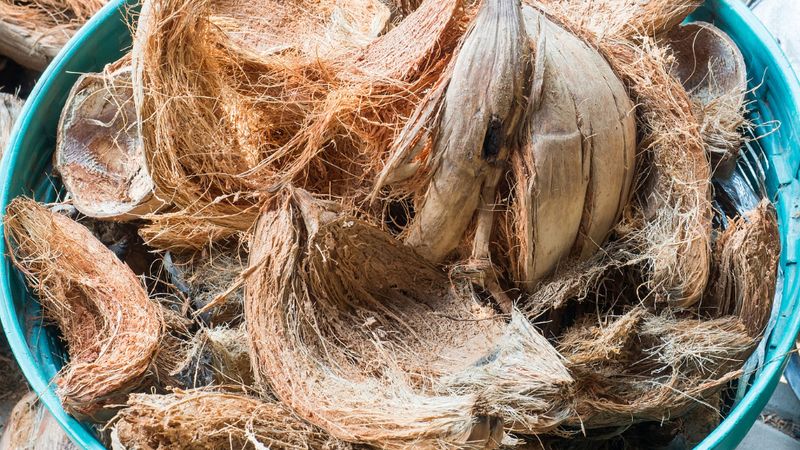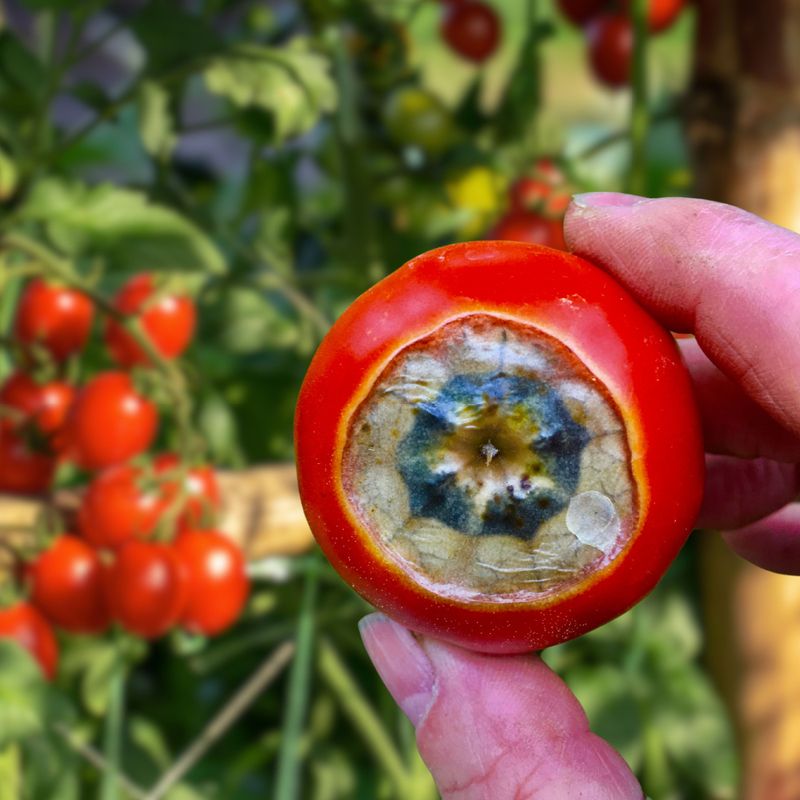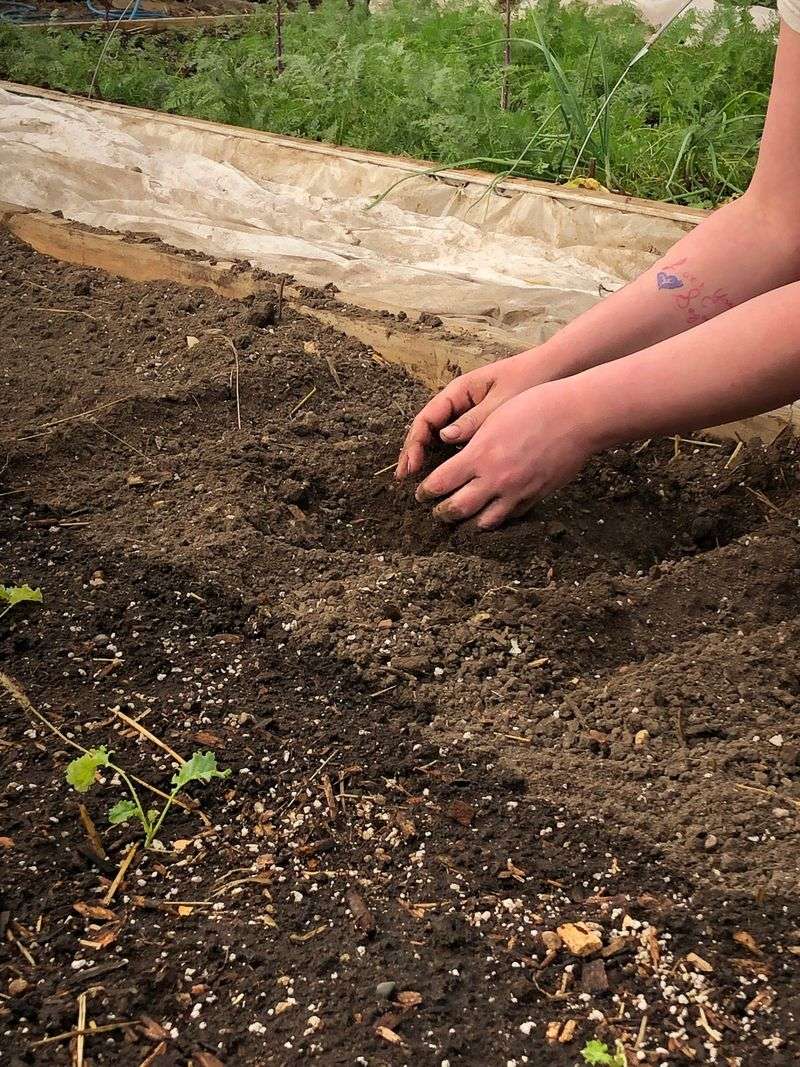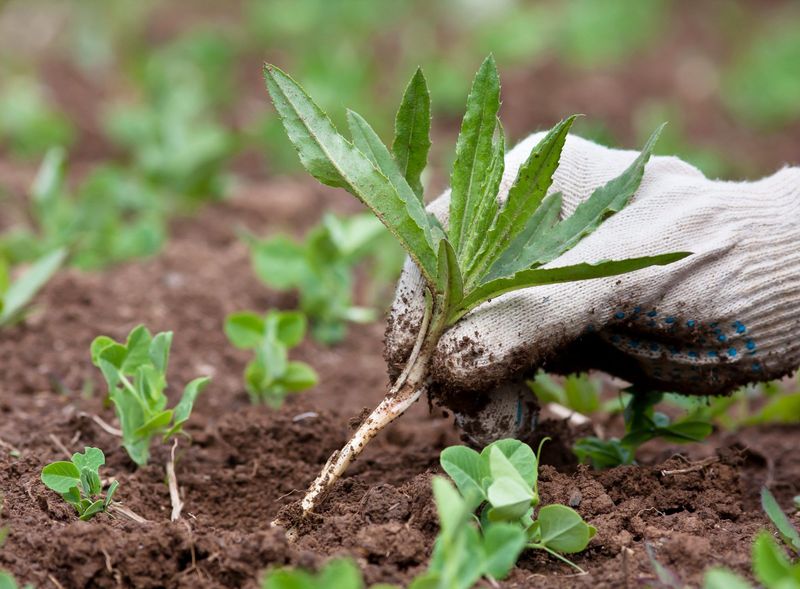Getting your soil mix right can make or break your raised bed garden. The wrong mix can lead to stunted growth, disease, and disappointed harvests. Your veggies have specific needs, and using the wrong soil can waste a whole growing season of hard work.
1. Pure Clay Soil
Clay soil becomes a nightmare in raised beds. It compacts easily, creating a dense environment where roots struggle to penetrate and water pools instead of draining.
Tomatoes and carrots particularly despise clay-heavy mixes. Their roots can’t push through the compacted material, resulting in deformed vegetables and poor yields.
During hot summers, clay soil hardens like concrete, creating an almost impenetrable barrier for delicate root systems and beneficial soil organisms.
2. Sand-Only Mixtures
Garden beds filled with mostly sand drain water too quickly, creating desert-like conditions where nutrients wash away before plants can absorb them.
Leafy greens like spinach and lettuce will wither rapidly in sandy mixes. Their shallow root systems can’t chase after the quickly draining water, leaving them perpetually thirsty.
The lack of organic matter in sand-heavy mixes means there’s little nutrition available, resulting in pale, stunted plants with poor flavor development.
3. Uncomposted Manure Mix
Fresh manure releases ammonia and can literally burn your plants’ roots. The high nitrogen content overwhelms seedlings and can kill established plants too.
Root vegetables like beets and radishes develop forked, twisted shapes when grown in beds with raw manure. The excessive nitrogen promotes leafy growth at the expense of the roots you actually want to harvest.
Uncomposted manure often harbors weed seeds and pathogens that can spread throughout your garden and make you sick if they contaminate your food crops.
4. Bagged Potting Soil Only
Regular potting soil becomes too lightweight in raised beds, drying out almost immediately after watering. The soil structure breaks down quickly, leaving plants without proper support.
Heavyweight feeders like broccoli and cabbage struggle tremendously in pure potting soil. They quickly deplete the limited nutrients and develop yellowing leaves and tiny heads.
Many commercial potting soils contain chemical wetting agents and synthetic fertilizers that can harm beneficial soil organisms and create dependency rather than building soil health.
5. Heavy Mulch-Laden Mix
Soil with too much undecomposed wood mulch creates a nitrogen problem as decomposing wood steals nitrogen from the soil. Plants turn yellow and growth slows dramatically.
Nitrogen-hungry crops like corn become particularly stunted in mulch-heavy mixes. The corn stalks remain thin and produce tiny, poorly filled ears if they manage to produce at all.
Wood chips break down slowly, creating an awkward soil texture that’s difficult to work with and can remain problematic for multiple growing seasons.
6. Peat Moss Overload
Excessive peat moss creates an overly acidic environment that most vegetables can’t tolerate. The pH drops below 5.5, making nutrients like calcium unavailable to plants.
Beans and peas perform terribly in peat-heavy mixes. These legumes prefer neutral to slightly alkaline conditions, and the acidity prevents the beneficial bacteria they need from colonizing their roots.
Peat moss also repels water once it dries out completely, creating dry pockets throughout your raised bed where seeds fail to germinate and established plants wither unexpectedly.
7. Construction Sand Mix
Construction sand contains salts and chemicals that wreak havoc on garden plants. The jagged particles also create poor soil structure that damages delicate root systems.
Peppers and eggplants react badly to construction sand, developing leaf burn and dropping flowers before fruit can set. The salt content disrupts their ability to take up water properly.
Unlike horticultural sand, construction materials often contain limestone residues that dramatically alter soil pH, creating conditions where micronutrients become locked away from plant roots.
8. Pure Compost Soil
Surprisingly, using only compost creates problems in raised beds. The material is too rich and breaks down rapidly, causing soil levels to sink dramatically mid-season.
Onions and garlic develop soft, disease-prone bulbs in pure compost beds. The excess nitrogen promotes lush top growth at the expense of the bulb development you’re actually after.
All-compost beds tend to stay waterlogged in rainy weather, creating ideal conditions for fungal diseases like powdery mildew and damping off that can destroy entire plantings.
9. Heavy Clay Loam
Clay loam that hasn’t been properly amended becomes cement-like in raised beds. The poor drainage creates waterlogged conditions where roots literally drown from lack of oxygen.
Root crops like potatoes and sweet potatoes absolutely hate clay loam. Instead of developing large, smooth tubers, they form small, oddly shaped roots with rough skin and poor storage qualities.
During hot weather, clay loam forms a hard crust that prevents water penetration and seedling emergence, wasting seeds and creating patchy, uneven growth throughout the bed.
10. Lawn Clipping Mix
Fresh grass clippings create a slimy, oxygen-deprived environment as they decompose. The heat generated can actually cook plant roots, causing sudden collapse of seemingly healthy plants.
Cucumber and squash plants develop stem rot when grown in beds with too many fresh lawn clippings. The humid microclimate around their stems becomes the perfect breeding ground for pathogenic fungi.
Grass clippings from lawns treated with herbicides can bring those chemicals into your vegetable bed, causing twisted growth and crop failure that mimics disease problems.
11. Straight Topsoil Fill
Bulk topsoil often contains weed seeds, rocks, and debris that create ongoing maintenance headaches. The quality varies dramatically between suppliers, making results unpredictable.
Salad greens grow poorly in straight topsoil, developing bitter flavors and tough texture. The dense structure prevents the quick, tender growth that produces the best-tasting leafy vegetables.
Topsoil from unknown sources may contain persistent herbicides or heavy metals that can affect plant growth for years and potentially contaminate your food crops.
12. Soggy Peat-Heavy Mix
Waterlogged peat creates anaerobic conditions where harmful bacteria thrive. The resulting soil smells sour and supports very little beneficial microbial life.
Herbs like rosemary and thyme rapidly develop root rot in soggy peat mixtures. These Mediterranean plants evolved for dry, well-drained conditions and simply can’t cope with constantly wet feet.
Wet peat soil stays cold much longer in spring, delaying planting and slowing germination of early crops like peas and spinach by weeks compared to better-draining mixes.
13. Hydrophobic Coconut Coir Mix
Low-quality coconut coir develops water-repellent properties, creating dry zones throughout your raised bed. Water runs off instead of soaking in, leaving plants perpetually thirsty despite regular watering.
Strawberries perform particularly poorly in hydrophobic coir mixes. Their shallow roots can’t access enough moisture, resulting in tiny berries with concentrated, overly tart flavor rather than the juicy sweetness you want.
Cheap coir products often contain high salt levels from their processing, creating additional stress for plants and preventing proper nutrient uptake.
14. Synthetic Fertilizer-Loaded Mix
Soil mixes with excessive synthetic fertilizers create salt buildup that burns roots and disrupts the soil food web. Plants initially grow fast but then crash as beneficial soil organisms disappear.
Heirloom tomatoes develop blossom end rot and cracked fruits when grown in chemically overfertilized soil. The imbalanced nutrition prevents proper calcium uptake, even when calcium is present in the soil.
Chemical-heavy mixes support fewer beneficial insects and pollinators, requiring more intervention from you to control pests and ensure proper fruit set.
15. Sterile Soil Mixes
Completely sterilized soil lacks the beneficial microorganisms that help plants access nutrients and fight off diseases. Plants grow poorly without their microbial partners.
Legumes like snap peas and green beans struggle to form nitrogen-fixing nodules in sterile soil. Without their symbiotic bacteria, they can’t create their own fertility and remain stunted with pale foliage.
Sterile mixes become easily colonized by pathogenic fungi and bacteria that arrive on plant material or in water, often creating worse disease problems than unsterilized soil with balanced microbial populations.
16. Weed Seed-Infested Mix
Soil containing weed seeds creates a maintenance nightmare that can overwhelm vegetable plants. Weeds compete aggressively for water, nutrients, and light.
Low-growing crops like carrots and radishes get completely overshadowed by fast-growing weeds. By the time the weeds are visible above the soil, they’ve already established extensive root systems that intertwine with your vegetable roots.
Hand-weeding becomes increasingly difficult in raised beds with weed-infested soil, often resulting in accidental damage to your vegetable plants during the removal process.
17. Hardwood Sawdust Mix
Fresh sawdust creates severe nitrogen deficiency as it decomposes. Plants turn yellow and growth virtually stops while soil bacteria use available nitrogen to break down the wood particles.
Nitrogen-loving leafy vegetables like kale and Swiss chard develop pale, undersized leaves in sawdust-heavy soil. The plants struggle to produce the lush foliage that makes these crops worth growing.
Sawdust from treated lumber can introduce arsenic, chromium, and other toxic chemicals into your vegetable bed, creating health hazards for both plants and people who eat them.
18. Alkaline Limestone Mix
Soil with excessive limestone or concrete debris creates highly alkaline conditions where iron, manganese and other micronutrients become unavailable to plants. Leaves develop yellowing between the veins called chlorosis.
Blueberries and potatoes absolutely refuse to thrive in alkaline soil mixes. These acid-loving plants develop stunted growth, yellow leaves, and produce tiny, inferior harvests when the pH climbs above 7.0.
High-pH soil also affects the flavor development of many vegetables, resulting in bland taste and poor color in crops like tomatoes and peppers.

